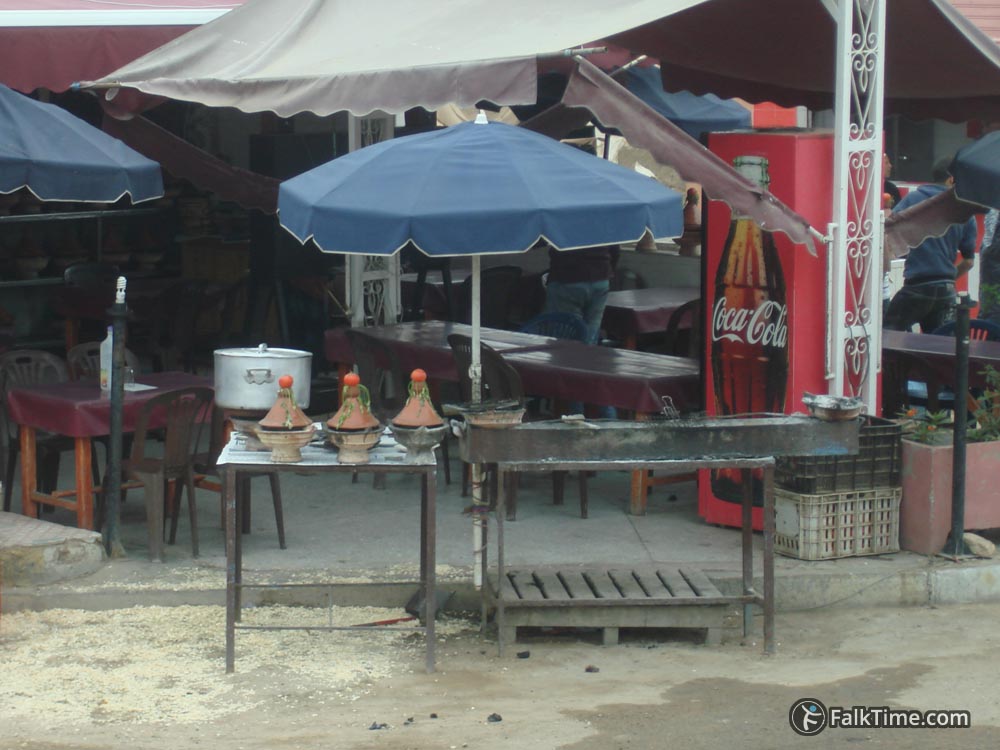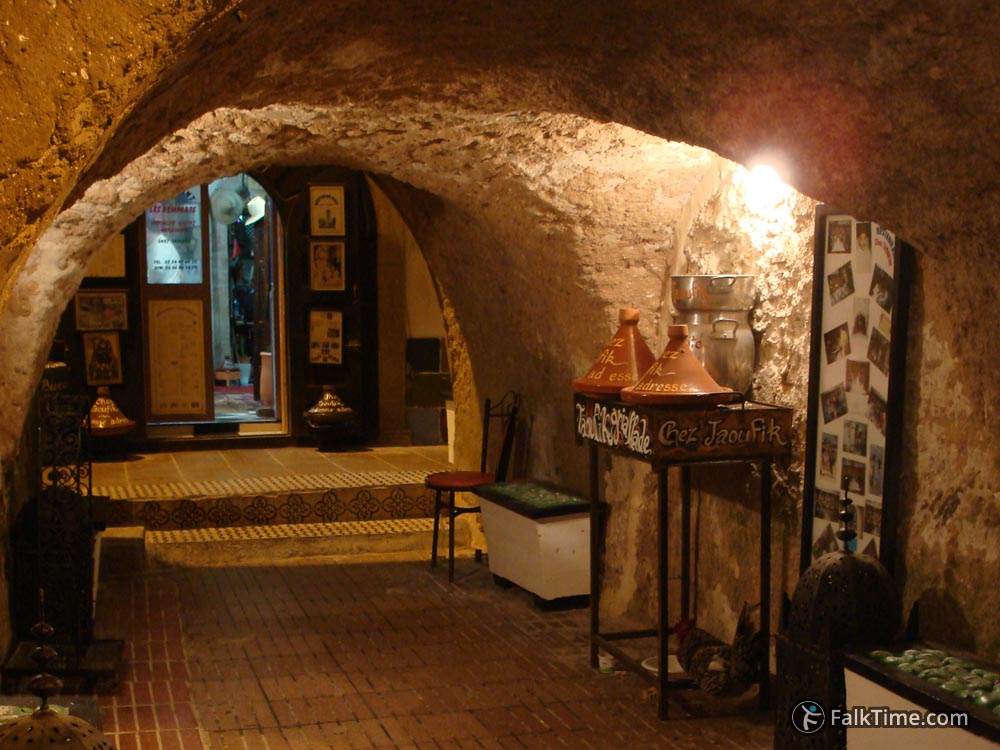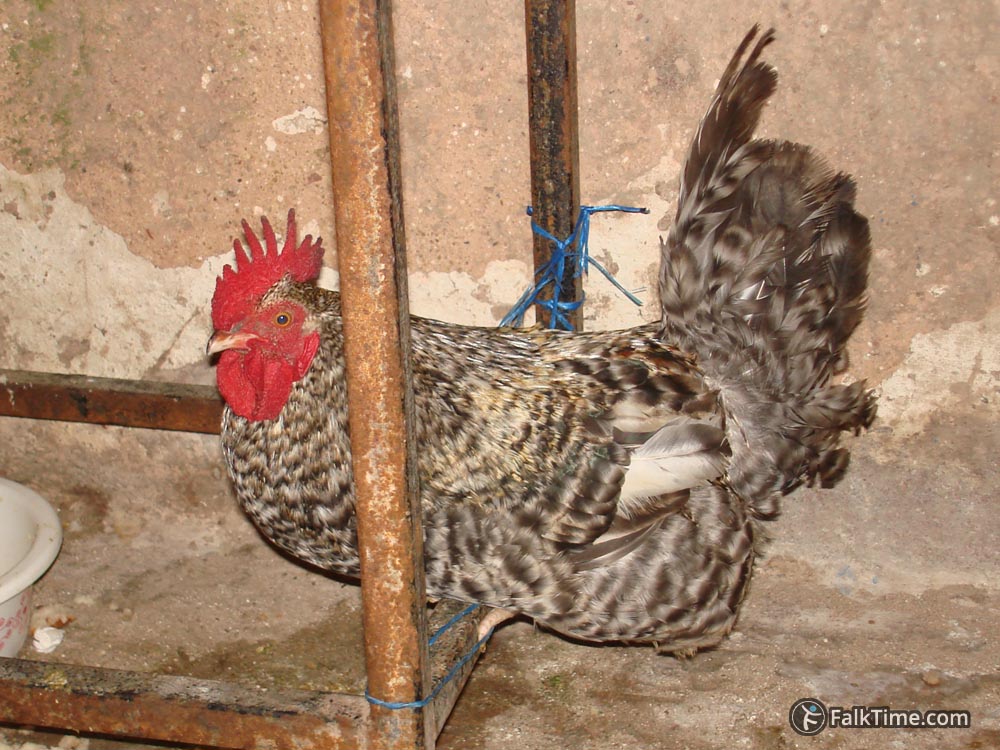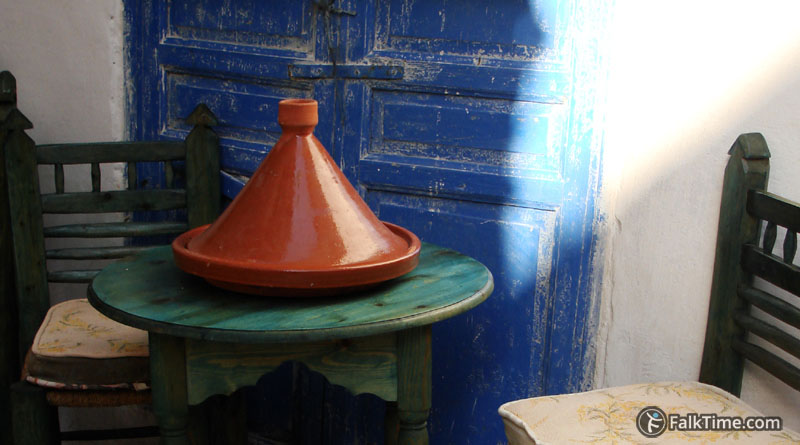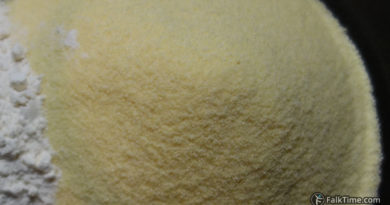Moroccan tajine (tagine)
Actually tagine is more a cooking method (using a clay pot of a special shape) than a dish. Because there are too many recipes for tajine-cooking.
Tajine – a pot
Tagine is a clay frying pan with a high conical cover. On the top of the cover there is a little hole. In many books it is written that due to this hole and the height of cover a dish becomes more tender and juicy. Authors state: while stewing the steam constantly condenses and flows down. Many guide books recommend to bring a tajine back home as a souvenir, because in Morocco they are much cheaper.
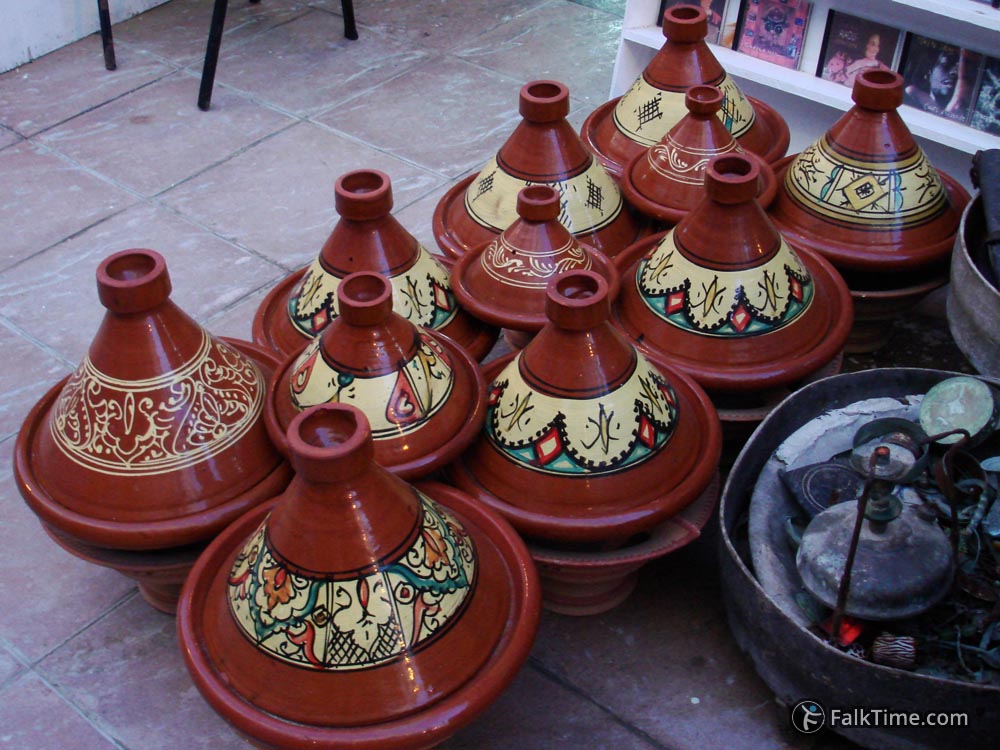
Before my first trip to Morocco I started dreaming of a tajine pot. But my mind is too rational. So I will give you some practical facts:
1. Many times I’ve seen how Moroccans put a tomato on the top of cover – so if the hole was right on the top, then it was closed by a tomato.
2. And I have never seen their faces when they wash tajines. Any food that was cooked in a tagine sticks to both: the pot and its cover. Because cover stands right on a pan. From one side it plays a role of a plumbing trap – it prevents steam from coming outside; and when the cover is topped with a tomato – the smell becomes locked inside of a tajine. From the other side the cover appears to be too close to food, so it sticks to clay.
3. Pottery is fragile. I mean both: transportation and someone’s awkwardness.
4. Tajine requires space for storage due to its unique shape.
5. You will need a splitter (a special metal disc) if you cook on a stove. And it’s impossible to use a tagine with induction cooker (that are rather popular in Russia nowadays and replace old electrical stoves).
6. If you take a wok frying pan with a simple glass cover, it will easily replace a tajine. The steam condenses on a cover and flows down to food.
Now you can decide, whether you need a traditional clay tajine or a modern non-stick wok.
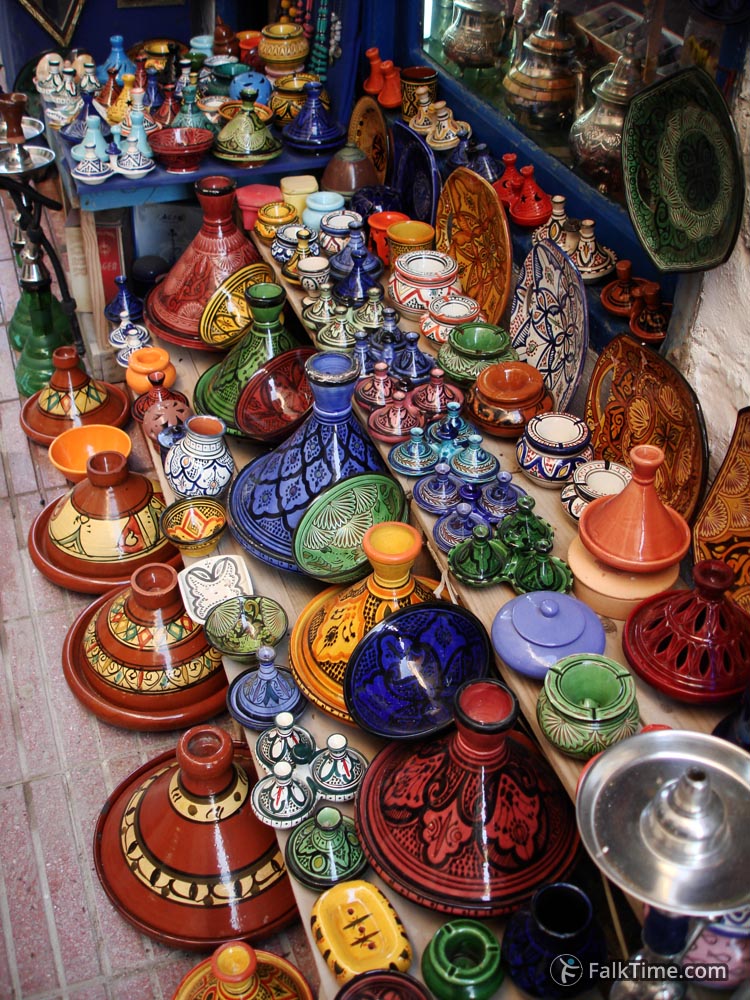
There are also beautifully decorated tajines of any size for sale – they are used as a tableware (only serving, no cooking).
Tajine – a dish
There are too many variations. I will name the most common:
– With chicken and vegetables (f.e. a chicken leg with potatoes, tomatoes, green bell pepper and onion);
– Vegetable tajine (usually some of following vegetables are present: carrots, salted lemons, potatoes, courgettes, tomatoes, green bell peppers, onions, artichoke);
– Mruziya or m’assal (with lamb, prunes, raisins and honey);
– Kefta mkaoura (a meatball tajine with tomato sauce) – recipe;
– Kefta in saffron-lemon sauce – recipe;
– M’qalli (fish or chicken tagine with olives and salted lemons).
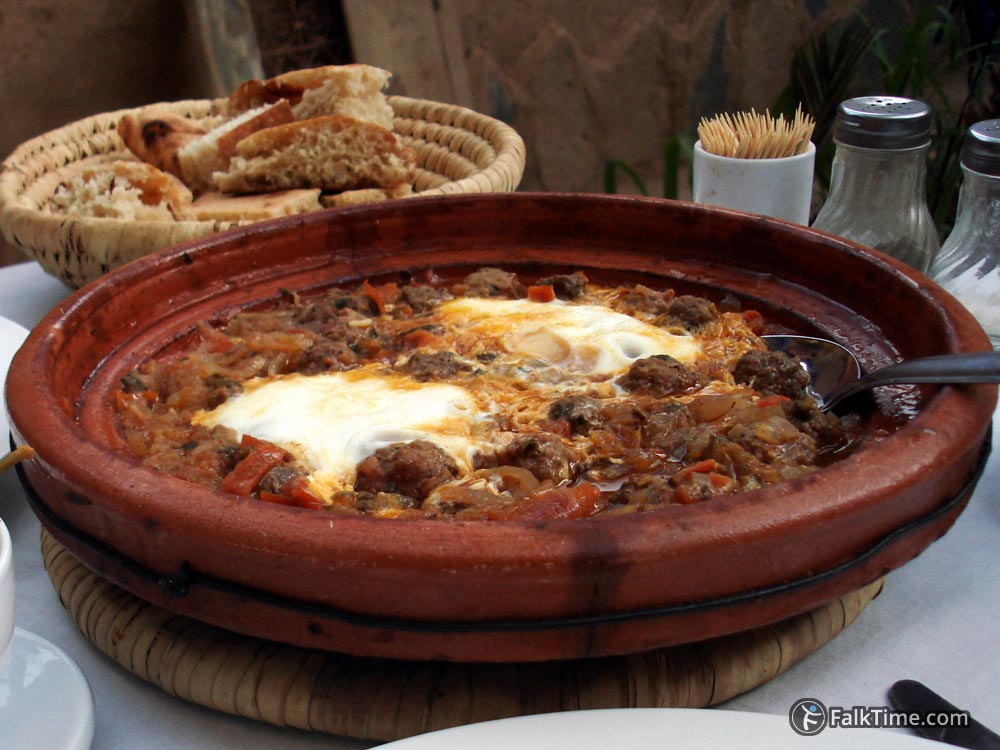
Moroccans put only raw meat (not a precooked one) in a tagine. All ingredients are put layer by layer. Every layer is sprinkled with herbs and spices. Usually the dish is cooked without additional water. It takes ~1 hour or more at low heat.
Marqa
One of tajine-cooking traits is a fragrant sauce marqa. It appears after a long time stewing. It can be liquid as a syrup or thick as a paste. Marqa contains a concentrated flavor of all ingredients of a dish. The professionalism of a Moroccan cook is rated by the quality of marqa.

